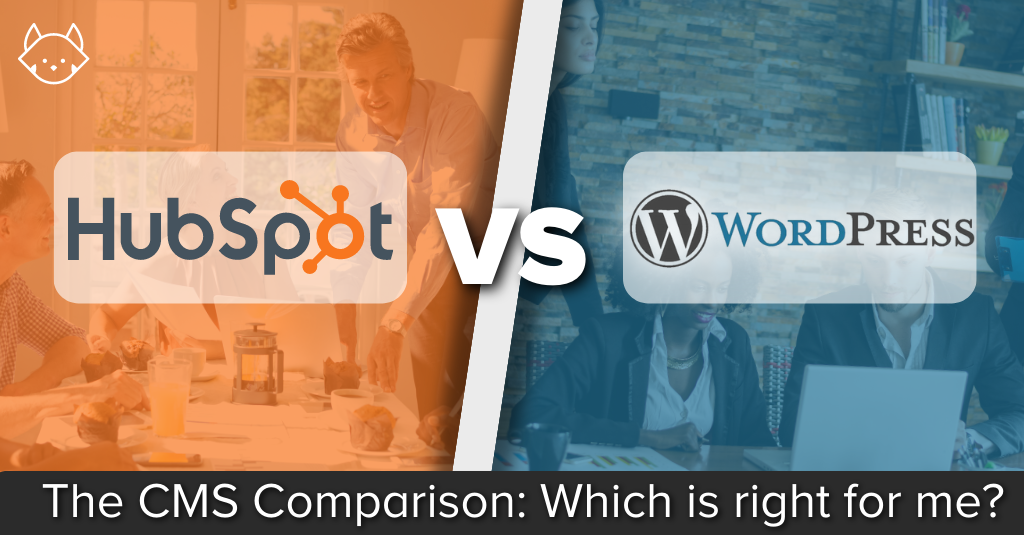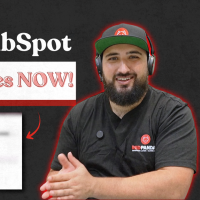You’re on the hunt for a one-stop solution to streamline your sales, marketing, and customer service processes. You’ve likely heard HubSpot being mentioned as a good platform to elevate your business operations. Yet, as a senior marketing or sales leader, the stakes are high and every decision counts. Your cautious side calls for a thorough examination: Does HubSpot indeed have it all? Or are there gaps you ought to know before making such a pivotal decision?
Let’s cut through the online noise together. In this article, you’ll explore the core features of HubSpot and its limitations. You’ll gain clarity on how it stacks against other CRM platforms, its pricing structure, and whether its functionalities align with your business’s unique demands. Your search for a comprehensive solution has led you here, and rightfully so.
With over 15 years of combined experience in onboarding customers with HubSpot and managing portals, we delve into HubSpot’s offerings to provide you with an honest, insightful reflection. Your concerns are valid, and this article aims to address them with a blend of expertise and straightforward talk, unlike any other source. By the end, you’ll be well-equipped to decide if HubSpot is the right fit for your enterprise’s intricate needs.
Core Features of HubSpot
HubSpot is like a big toolbox for your business, packed with different tools to help you with marketing, sales, and customer service tasks.
Each silo (for example marketing, sales and customer service) has its own “hub” within HubSpot. When you get HubSpot, you have full access to the CRM, which is free forever. You then have access to free features across each of the hubs provided by HubSpot.
Below, you will learn about the features included in the CRM and each Hub.
HubSpot CRM (Customer Relationship Management)
HubSpot’s CRM is the foundation that holds everything together. It helps you keep track of your customers, their details, and your conversations with them.
The HubSpot CRM is completely free, forever. Check out our article ‘Is the HubSpot CRM Actually Free?’ to get a detailed analysis of exactly how the free plan works, and what you can and can’t get with it.
For a quick breakdown, here’s everything the HubSpot CRM can do:
- Content management
- The ability to store companies that are associated with your contacts
- The ability to store and track sales deals
- The ability to track contact website activity
- Gmail or Outlook integration
- Limited sales productivity tools (like email scheduling, tickets, and meeting scheduling)
- Access to email tracking, templates, and canned snippets
- Access to calling
- Access to third party integrations through the App Marketplace
- Forms to capture leads throughout your site
- Live chat and basic chatbots that can be embedded on your website
You also get a range of free tools included in the Marketing Hub, Sales Hub, Operations Hub and Services Hub. You can see a full list of the free features provided to you here. Note you will need a HubSpot account to access this URL.
HubSpot Marketing Hub
This is where you can manage all of your marketing activities for your business. You can see all the features included in the Marketing Hub, depending on the plan you choose:

Check out this article for a detailed analysis of the Cost of HubSpot Marketing Hub.
HubSpot Sales Hub
Once your prospects show interest in your brand, the Sales Hub helps you organise your sales activities. Here’s a list of the features the Sales Hub provides, depending on the plan you choose:


Check out this article for a detailed analysis of the Cost of HubSpot Sales Hub.
HubSpot Service Hub
After you’ve made a sale, the Service Hub helps you keep your customers happy. You can track customer issues, manage feedback, and ensure your customers get the help they need when they need it.
Check out this page for a full list of Service Hub features. You will have to scroll down to Service Hub to access the information on the page.
HubSpot Operations Hub
HubSpot’s operations software includes a full suite of tools that enables you to connect your apps, sync and clean customer data, and automate every process for an efficient business and a friction-free customer experience.
Check out this page for a full list of Operations Hub features. You will have to scroll down to Operations Hub to access the information on the page.
HubSpot CMS (Content Management System) Hub
This is where you can create and manage your website content. Some businesses run their website through HubSpot, while some use alternative CMS tools while using HubSpot for marketing and sales specifically.
If you’re not sure whether the HubSpot CMS is worth it, check out this article comparing the HubSpot CMS vs WordPress CMS. This guide will also give you a good indication of exactly what the HubSpot CMS can (and can’t) do.
Check out this page for HubSpot CMS Pricing. You will have to scroll down to CMS Hub to access the information.
After reading through the above section and related links provided, you should have a pretty good idea of exactly what HubSpot can do, and how much it costs. But, the question still remains, what can’t HubSpot do?
Limitations of HubSpot
HubSpot is a powerful tool equipped with a great range of features to support your marketing, sales, and customer service needs.
However, it’s not a silver bullet. It has its set of limitations.
Here are some areas where HubSpot might not fully meet your expectations:
- E-commerce
- Customisability
- Pricing
- SMS Marketing
- Language Support
- Hosting Restrictions
E-commerce
HubSpot isn’t tailored as an e-commerce platform, so you’ll probably miss out on having some of your needs met if you’re an e-commerce store. For example, if you wanted to build your website through HubSpot, you would have to host your store on a separate platform (like Shopify) while the rest of your site is hosted on HubSpot. This is because HubSpot does not have built-in ecommerce capabilities, and so in order to sell products, you wouldn’t be able to do that through HubSpot.
However, HubSpot is launching a new product called the HubSpot E-commerce Hub, which may close this gap and remove this limitation.
Customisability
HubSpot isn’t completely customisable. Whether this is a limitation or not depends entirely on your business. At RedPandas, we’ve never personally seen a case where HubSpot couldn’t fulfil the needs of businesses (including enterprise level businesses).
However, if you do have a very specific need that requires a very customised solution, then HubSpot may potentially be limited here. If this is an issue for you, check out our article comparing HubSpot vs Salesforce, which delves into the differences between customisability of these two platforms.
Pricing
This isn’t exactly a limitation, but it is something to consider.
HubSpot may not always be the cheapest option especially when compared to other platforms that offer similar functionalities. The costs can add up quickly based on the number of contacts you have or the number of users on your team, especially for the Marketing, Sales and Service Hubs where you pay per user.
As such, if you’re on a tight budget, this may be something to consider.
SMS Marketing
HubSpot does not currently have its own SMS Marketing features, which means you will need to find a third-party solution and integrate it. This isn’t exactly a limitation because there aren’t any barriers to integrating and using SMS Marketing in this way, however it may increase your costs as you purchase third-party SMS Marketing tools.
In saying this, HubSpot is actually developing SMS Features as an add-on feature, which will hopefully be released soon.
Language Support
HubSpot’s multi-language support has certain limitations that may impact businesses operating in more than one language.
Here are the specifics:
- Supported Languages: While HubSpot supports various languages, not all features are available in every language right away. For example, certain functionalities like call transcription or specific search features within HubSpot may not be available for all languages
- Limited Multi-language Functionality: It’s suggested that HubSpot doesn’t fully support multi-language functionality, which might necessitate managing language-specific sites under multiple sub-domains
- Translation for System Pages and Default Content: When it comes to translating default content for blog listing, blog posts, and system pages like 404 or 500 error pages, users might need to use external templates or solutions
These limitations imply that while HubSpot offers some multi-language support, it may not provide a fully seamless experience, especially if your organisation has complex multi-language requirements. The need for external solutions or additional setup might be necessary to achieve the desired multi-language functionality on your website.
In saying this, HubSpot has developed something they call Multi-Language Content Management which to some degree reduces the impact of this limitation.
Hosting Restrictions
The hosting restriction on HubSpot’s CMS Hub is essentially tied to the fact that if you choose to build your website using HubSpot’s CMS, you are required to host it on HubSpot’s infrastructure, and you cannot host it elsewhere.
Conversely, if you build your website using a different Content Management System (CMS), you cannot host it on HubSpot.
Here’s a breakdown of the hosting limitations:
- Exclusive Hosting on HubSpot: If your website is built with HubSpot’s CMS, you can only host it on HubSpot. This means you’re tied to HubSpot’s hosting environment and cannot use an external hosting provider
- No External Hosting: HubSpot does not allow its CMS to be hosted externally. The infrastructure of HubSpot’s CMS is structured to ensure power, performance, reliability, and security, which would be compromised if hosted elsewhere
- Regional Hosting: As of the information available, HubSpot’s product infrastructure is hosted on Amazon Web Services (AWS) either in the United States East region or in Germany. This indicates that while there is some regional hosting support, the options are limited. Before July 2021, HubSpot’s hosting was solely located in the United States, but they expanded to include a hosting environment in the European Union as of that date
- In-house CMS Requirement: HubSpot’s CMS Hub is a comprehensive tool for creating, managing, optimising, and reporting on your website. The caveat is that to enjoy these integrated features, your website must be built and hosted within HubSpot’s ecosystem
This hosting arrangement might not suit every organisation, especially those looking for more flexible hosting options.
Now you should know exactly what HubSpot can’t do and where it falls short. Let’s take a look at HubSpot pricing and hidden costs.
HubSpot Pricing and Hidden Costs
Understanding the cost structure for HubSpot can be a tad challenging, especially when you’re just getting acquainted with the platform.
HubSpot’s Pricing Tiers
HubSpot offers different pricing tiers for each of its hubs – Free, Starter, Professional, and Enterprise. Each tier unlocks more advanced features and capabilities:
For the HubSpot Services, Operations and Ecommerce Hubs, please refer to HubSpot’s Official Pricing Page and simply scroll down to the relevant section.
Hidden Costs
While HubSpot is transparent about its pricing, there might be some costs that sneak up on you:
- Additional Contacts: HubSpot’s pricing scales with the number of contacts you have. If your contact list swells, so will your bill
- Third-Party Integrations: While HubSpot plays well with other tools, some integrations might require a paid subscription to the third-party service. This may come into play with SMS Marketing, for example
- Training and Onboarding: You are required to also pay an Onboarding Fee to get started with the Professional or Enterprise plans of any Hub on HubSpot. You can learn more about HubSpot Onboarding here
So, What’s Next?
After delving into the core capabilities of HubSpot and exploring its limitations, you should have a pretty good idea of exactly what HubSpot can do… and what it can’t do.
Overall HubSpot brings to the table a comprehensive suite of tools across CRM, CMS, marketing, sales, and customer service, providing a unified platform to manage customer relationships and business operations.
So, Does HubSpot Do Everything?
In a nutshell, HubSpot offers a comprehensive set of tools and features that cater to a wide range of business needs. It might not “do everything” in the sense of highly specialised or unique CRM requirements.
However, we haven’t seen a case where a business had a highly specialised solution that HubSpot couldn’t take care of.
Now that you know what HubSpot can and can’t do, you might want to find out whether HubSpot is a good investment for your business.













